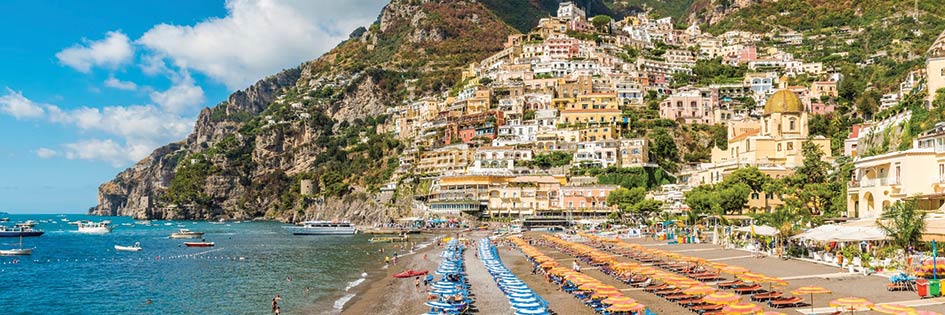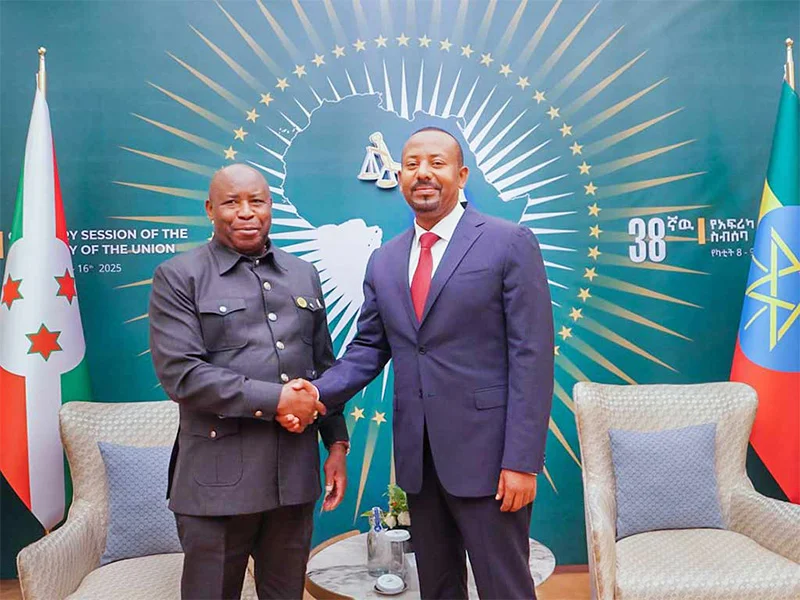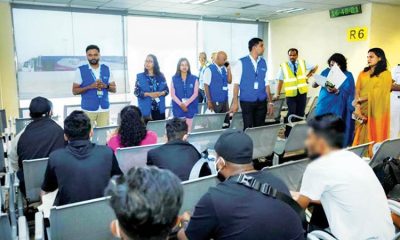Features
REFLECTIONS ON SRI LANKAN IMMIGRATION

INTO ITALY (1970-2000)
(Excerpted from Falling Leaves, an anthology of memoirs by LC Arulpragasam)
This article deals with the patterns, problems and some stories of Sri Lankan immigration into Italy during the period 1970 to 2000. Although it focuses on immigration into Italy, the problems discussed are common to most “new” countries of immigration. The latter are the non-English speaking countries, which have become Sri Lankan’s most important immigrant destinations since 1980. The writer and his family lived in Rome for 30 years during this period and were able to witness the progress and problems of Sri Lankan immigration and to listen to the immigrants’ stories: some of them glad, some of them sad.
General Considerations
Some general observations may be useful by way of background. First, the “colour bar” has always acted as an implicit or explicit bar to immigration in the early days to “white” countries such as Britain and Australia in the 1950s. In this light, it is remarkable that Italians showed little colour consciousness when Sri Lankan immigration began in the late 1970s. This is partly a heritage from Roman times when coloured Cleopatra was lionized in Rome, while a couple of the last Roman Emperors were from current Middle Eastern countries. A personal experience of mine illustrates this lack of colour consciousness in the early days.
Around 1975, having capsized in my boat during a storm in the middle of a large lake near Rome, I was left stranded about ten miles from where I had set out. I had no option but to walk to the main road bare bodied, bare-footed, and clad only in my swimsuit. I had barely thumbed a ride when the first three cars ground to a halt, competing to give me a ride, despite my rough appearance. For those helpful Italians, I was a stranger in their country (proclaimed by my colour), who needed their assistance. Forty years later, however, things have changed substantially – for both qualitative and quantitative reasons, as discussed later.
Secondly, the question of class has played an important role in determining the immigrant destinations of Sri Lankans in the early days. In the 1950s and 1960s, Ceylonese immigration was aimed at the English-speaking countries such as the UK and Australia. Apart from the question of colour, immigrants were accepted by those countries only if they were English-speaking and professionally or otherwise qualified. This in practice restricted such immigration only to the Ceylonese English-educated middle class.
Conversely, these middle-class migrants did not seek immigration to European countries, such as France, Germany and Italy, because they could not aspire to professional/middle class jobs in those countries because of needed language skills. Contrarily, these non-English speaking countries became the favoured immigration destinations for the poorer classes in Sri Lanka, who aimed only at low level labour and service jobs where local language skills did not matter so much.
Thirdly, the numbers and pressure of incoming immigrants also affects the attitude of the host country towards them. While Italy became the most popular destination for working class people from Sri Lanka, it ultimately also attracted a flood of immigrants from the Philippines and Bangladesh, with later inflows from Northern and Sub-Saharan African countries, multiplied again by influx from the Balkans and Eastern Europe.
The sheer numbers of the poor and uneducated people of different colours, languages and cultures caused pressures in the lower-level labour and housing markets, which together with cultural differences and exaggerated fears of immigrant crime gave rise to anti-immigrant feelings in Italy by the mid-1990s. For example, the Bangladeshis by the late 1980s had monopolized the activity of cleaning car windscreens at traffic-lights. Many Italians, who had always championed immigration submitted to their windscreens being washed – even if they did not need it – so as to pay the poor immigrants something. But even they got really fed up when accosted every day at every traffic light (about four times a day at the same traffic lights!) till even they shouted “basta” (enough)!
To this, I have to add my own experience. Whereas I had previously experienced a positive reaction to my dark colour in 1975, I had the opposite experience twenty years later in 1995 in Rome. The Italian experience with needy immigrants had this effect over the years. Coming out of a supermarket one day, I saw a frail old lady staggering along the uneven payment, bent double over her heavy shopping bags. Since I was walking in the same direction to my car, I walked up to her and said: “Signora, can I help you to carry those bags?” Even I was not prepared for her reaction: she recoiled in aversion or fear, clutching her bags away from me, shrieking shrilly “No, no, no!” I took off like a thief caught in the act!
From an overall point of view, there had been no change between 1975 and 1995 – except that the numbers of immigrants had redoubled many times over and that they were from different countries and cultures, but mostly from the unemployed poor. Hence, the sheer numbers and class of immigrants seemed to have changed the perceptions and attitudes of Italians towards them.
Push and Pull Factors
Any overall view on immigration needs to look at the push factors which cause emigration from the home country, as well as the pull factors which attract them to the receiving country. As for the push factors, the hard economic times of the late 1970s and 1980s caused the first wave of Sri Lankan immigrants, who were mainly from the poor fishing families of the west coast, mainly Catholics from Negombo, Wennapuwa areas. This was followed by more Sinhalese migrants from the west coast and the interior who migrated for the same reasons.
On the other hand, communal violence and lack of economic opportunities also impelled an exodus of Tamil migrants to Italy in the 1980s, which gathered momentum in later years. A good indicator of the force of the push factors can be gauged by the premium paid to agents to arrange the logistics of immigration. In the Sinhala areas, the price charged by agents for immigration to Italy was around Rs. 300,000 in the early 1980s, but had increased to around Rs. 600,000 by the year 2000. In the Tamil areas, due to political and security considerations, the rate had increased to around Rs. 900,000 by the year 2000, and is probably more today.
A consideration of the push factors also brings to mind the enabling factors that make such immigration possible. A ring of agents appeared who extracted money from the would-be immigrants to arrange their journey. When Italy introduced visa restrictions for Sri Lankans (around1981), people-smuggling became a recognized industry. Even fishing trawlers were used by smugglers to make the hazardous journey. Overland routes were also used, with immigrants being abandoned in transit countries both by land and by sea, while even outright scams were reported.
The pull factors which attracted migrants to Italy are equally important. The first was quite fortuitous. Soon after World War II, Ceylon and the Philippines were the only two advanced and westernized countries in Asia; hence Italy waived its visa requirements for them both. Italy thus became the primary immigration destination (the default position) for Sri Lankans, both as a base for future hoped-for entry into the UK or into other countries of Europe. If they failed in the latter, they returned to Italy for prolonged or permanent stay.
The main pull factor was obviously economic. Although Italy was a relatively poor country in the 1960s still recovering from World War II, it had already become a hive of economic activity in the 1980s-1990s, powered partly by a “black economy”, which was mainly dependent on cheap immigrant labour. Meanwhile, a middle class had emerged which could afford domestic help in the form of sub-wage immigrant labour, of which Filipinos and Sri Lankans were the most preferred. When success stories of the first immigrants reached home, more family and friends followed the good-luck trail to Italy.
Another pull factor arose from the exaggerated stories of successful or not so successful immigrants. The sociological literature has noted that the first immigrants are usually the more desperate or adventurous types, often those who had not done well in their own countries; those with secure jobs would seldom undertake the risk of the unknown. Some of the former exaggerated their stories to show how well they had done in the “promised land”. I remember how a recently arrived Sri Lankan immigrant posed for photographs of himself in his employer’s bed, having surrounded himself with the TV set and all the telephones in the house (to make sure that they all appeared in the photograph) to show how well he had fared in the new country. Needless to say, when this photo made the rounds in his village, everyone wanted to immigrate to Italy!
The third pull factor is the establishment of a “bridgehead” in the receiving country. The existence of a bridgehead or network in a new country served not only as a beacon of attraction but also as a support-system for new immigrants. We knew of a Sri Lankan maid working for a rich Kuwaiti family who, during that family’s one-week tourist visit to Rome, absconded and went underground, knowing that the Sri Lankan network would find her employment. Unfortunately, part of this Sri Lankan network later got into the business of forging Italian visas for family ,friends and even paying customers to enter Italy. Needless to say, this was done with the bribery and connivance of Italian immigration officers who allowed entry on the basis of these forged visas.
We also heard their stories through our Sri Lankan domestic helper: some of them happy, some of them sad.
Features
Africa gaining ground in intra-regional cooperation

 At a time when the US is veering towards a policy of international isolation, it augurs well for international growth that Africa is emanating signs of stepping up intra-continental cooperation. Above all, Africa is in the process of proving that she could ‘stand-alone’ and be relatively autonomous in her ground-breaking growth drive.
At a time when the US is veering towards a policy of international isolation, it augurs well for international growth that Africa is emanating signs of stepping up intra-continental cooperation. Above all, Africa is in the process of proving that she could ‘stand-alone’ and be relatively autonomous in her ground-breaking growth drive.
Of course such epochal developments should not be construed as meaning that Africa would sooner rather than later be rid of the socio-political and economic bottlenecks that have been dogging her at heel for decades. What they mean is that she is managing these problems in a consistently constructive fashion currently.
We in South Asia in particular need to take note of these developments. This is mainly in view of the fact that SAARC is non-functional. It is not ‘dead’, as a former President of Sri Lanka tried to have us believe, but its virtual paralytic state at present should have discerning sections in the region concerned. It is robust regional cooperation in the fields that matter that helps a country in its growth and development and if SAARC is dysfunctional this is a serious setback for Sri Lanka and the region.
Closer integration into BIMSTEC and ASEAN is certainly desirable but if governments are having Sri Lanka’s best interests at heart it is primarily to the SAARC region that they need to look. For instance, how Sri Lanka is hoping to further its growth prospects by not factoring in stepped-up and positive economic interaction with India and Pakistan, for example, is incomprehensible.
There is a strong regional dimension to any country’s economic growth and unless the relevant regional cooperative mechanisms are rendered operational, the desired level of national development could not be achieved in full. Hence the need to render SAARC fully operational once again.
However, unless and until governments of the region realize the urgency of meeting the above challenge, SAARC would remain in a state inertia. The pressing need is visionary political leadership at the regional level. Right now this is seriously lacking.
It would seem inappropriate and misleading at first blush to attempt to draw comparisons between the vast continent of Africa and the South Asian region in view of the latter’s comparative geographical smallness, but this is more so why Africa’s present exercises in intra-continental cooperation need to be positivey assessed. If Africa could be making some headway in intra-regional cooperation, given her ‘Giant’ status and her seeming unmanageability as a collectivity, why can’t South Asia, a comparatively physically small region? ‘This is the Question’.
While the above and connected matters of importance for regional growth need to be seriously studied by political leaders and policymakers of South Asia, they would be acting in the regional interest by taking a leaf or two out of Africa’s book of cooperative growth and development.
All watchers of international development should feel compelled to take a hard, discerning look at the 38th African Union (AU) Summit held in Addis Ababa, beginning February 15th this year. Interestingly, the Summit theme was, ‘Justice for Africans and People of African Descent through Reparations.’
Coincidentally, erstwhile Namibian leader Dr. Sam Nujoma passed away on the eve of the Summit. Nujoma was perhaps the last of those prominent leaders from Africa who doggedly championed the cause of the libration of his country and of the continent from the shackles of colonialism. More leaders of his ilk are required by the South in general and Africa in particular.
While the acquiring of ‘reparations’ for colonialism’s ravages could prove a very long-gestation project, it is vitally important for Africa and other regions that came under colonial control to keep the issue constantly in focus.
Meanwhile, Africa’s gains in economic cooperation under the AU need to be studied appreciatively by the South and other regions in their interests. Some of the achievements of the AU under the aegis of the African Development Bank (ADB), as outlined by outgoing president of the Bank, Dr. Akinwumi A. Adesina at the Summit were: ‘515 million African lives were transformed over the past decade, including 231 million women, 127 million people gained access to better services in terms of health, 61 million people gained access to clean water, 33 million people benefited from improved sanitation, 46 million people gained access to ICT services, 25 million people gained access to electricity.’
Reports said that the Summit also, among other things, adopted the ‘African Financing Stability Mechanism’. Under this arrangement, $20 billion in debt refinancing will be provided for African nations. This will happen alongside the adoption of the ‘Strategic Framework on Key Actions to Achieve Inclusive Growth and Sustainable Development in Africa Report’.
The Report outlines key actions for Africa to ‘Achieve and sustain an annual growth rate of at least 7% of GDP over the next 5 decades.’
The above are a few aims that the AU intends to achieve going forward for the whole of Africa. But they are sufficient evidence of the current effectiveness of the collective organization. We see here a notable example in South-South cooperation which is a dire need today in the developing world.
South-South cooperation is the way to go particularly in consideration of the US’ current policy of virtually ridding itself of the past policy of helping the South by way of development assistance. Instead of bemoaning the fact that institutions, such as USAID, will be almost no more, the South would do well to take a hard look at Africa’s success stories in helping itself with little or no external assistance.
The discontinuation of US assistance needs to be seen as the proverbial ‘blessing in disguise’ by the South. Here is an opportunity for the Southern hemisphere to finally rid itself of those neo-colonial umbilical binds that have been preventing it from achieving genuine national liberation.
To be sure, the South is not going to meet with spectacular success by adopting the African model in the near term. But if the model is doggedly persisted with by enlightened governments of the South some success is certain to accure to the hitherto ‘Wretched of the Earth’, going forward.
Features
Mrs. World Tshego Gaelae …doing it differently

While most of our pageant winners get involved in frivolous activities, during their reign, the 40th Mrs. World pageant winner, Tshego Gaelae, from South Africa, is keen to bring into the spotlight her country’s potential.
Before her departure for the Mrs. World pageant, held in Las Vegas, in the USA, in January, the Lawyer, Entrepreneur, Model and Digital Creator, said:
“I’m so excited to be sent not only as a delegate but a representative of those hopeful hearts that always want to see South Africa’s potential shine and win. I stand on the shoulders of icons, world champions, the Queens that have gone ahead of me, and of the world leaders that continue to ensure our global participation and impact.
“Thank you everyone for the support so far!”

A coke and a smile…with Sprite Cucumber her pick
Referring to the interview for the position of Mrs. World, Gaelae said: “We get to bring our most authentic self to advocate for the causes we want to advance through the most prestigious platform that is the Mrs World Pageant. What an honour to have such experienced judges who care to hear about what I want to achieve.”
The lead up to the prestigious Mrs. World event was doubly exciting for Gaelae as she got the opportunity to display not only her country’s creations but also check out certain nostalgic venues.
“We received the honour of being at the Elvis penthouse suite, at the Westgate Vegas! The space is spectacularly filled with iconic and historic presence, fit for the king that was Elvis Presley.”
The Mrs World participants spent an evening honouring Victoria’s Voice Foundation and Gaelae’s gift to the Foundation was a canvas shirt with President Nelson Mandela’s face printed on it. The shirt can either be worn or displayed in a frame, and Gaelae says she is so glad to have had the opportunity to present a piece of her beloved South Africa.”

The bangles she gifted to all the participants at the Mrs. World pageant
Gaelae went on to say: “I always joke about being Zulu in my past life, but on a serious note, I love the Zulu Culture so much, that I gifted my Mrs. World Pageant Sisters some beautiful bangles.”
They also visited the special Coca-Cola Store in Vegas, and got to taste some interesting flavours. And Gaelae’s pick … “Sprite Cucumber definitely wins for me.”
Mrs. World enthusiastically said that one of the biggest gifts she received out of her Mrs South Africa journey was that of sisterhood, “and it’s so amazing to come to the Mrs. World pageant and find it once again,” she went on to say.
“My roommate was the gorgeous Ishadi Amanda from Sri Lanka! We bonded with no delay, and laughed till we cried! I was literally paired with a sister from another mother.”
Tshego Gaelae also had a special comment to make regarding the article we published about her in The Island of 6th February, 2025.
“Thank you so much for the beautiful article and coverage.”
Features
Activate all that is good for your skin

 Hi! This week, too, I’m giving you some easy to prepare tips to help you achieve all that is good for your skin.
Hi! This week, too, I’m giving you some easy to prepare tips to help you achieve all that is good for your skin.
* Cucumber and Lemon:
Mix equal parts cucumber and lemon juice and apply the mixture on your face (avoiding eyes). Allow it to sit for 10 minutes and then rinse it off. This natural face beauty tip will brighten your skin tone and lighten blemishes, if used on a regular basis. The best aspect is that it is appropriate for all skin types!
* Tomatoes:
Scoop up the pulp of one tomato and apply it evenly on your face. Allow it to dry for 15 minutes before washing it off with warm water … to reveal a naturally radiant skin.
* Green Tea:
After steeping green tea in hot water for about 05 minutes, allow the tea to cool. Transfer the tea to a spray bottle and spray, in short bursts, or place a little amount onto a cotton pad and pat on your face after thoroughly cleaning it.
* Chilled Tea Bags:
A chilled black or green tea bag does wonders for your skin. This natural face beauty technique may rapidly reduce puffiness around the eyes, making them appear brighter and more alert. Place the tea bags on your eyelids and relax for 05 to 15 minutes while they perform their magic.
* Honey:
Applying a small amount of honey to your face every day is an excellent approach to getting healthy, bright skin. Honey’s absorbing properties draw out pollutants from skin pores and help completely cleanse your skin. Honey’s antibacterial effects heal and prevent acne. Honey’s antimicrobial qualities soothe skin irritation and protect skin from bacterial infections. Honey, has remarkable moisturising effects and is also a terrific relief for dry skin.
* Coffee:
Exfoliating on a regular basis improves the appearance of your skin, making it look younger and healthier. For those who enjoy coffee, a homemade coffee scrub is all the weekly nourishment your skin requires. Coffee’s anti-inflammatory qualities minimize redness, irritation, and acne. All you need to do is mix freshly ground coffee beans, coconut oil, and brown sugar to your desired consistency in a bowl. Massage gently in circular strokes over your face, then rinse with warm water. After using an exfoliant, always moisturise.
-

 Sports5 days ago
Sports5 days agoRemarkable turnaround for Sri Lanka’s ODI team
-

 Business5 days ago
Business5 days agoUN Global Compact Network Sri Lanka: Empowering Businesses to Lead Sustainability in 2025 & Beyond
-

 Features5 days ago
Features5 days agoScammed and Stranded: The Dark Side of Sri Lanka’s Migration Industry
-

 News6 days ago
News6 days agoSpeaker agrees to probe allegations of ‘unethical funding’ by USAID
-

 Features4 days ago
Features4 days agoDon’t betray baiyas who voted you into power for lack of better alternative: a helpful warning to NPP – II
-

 Features4 days ago
Features4 days agoTwo films and comments
-

 Features7 days ago
Features7 days agoClean Sri Lanka and Noise Pollution (Part II)
-

 Editorial6 days ago
Editorial6 days agoCoal giant awakes, but uncertainty prevails

